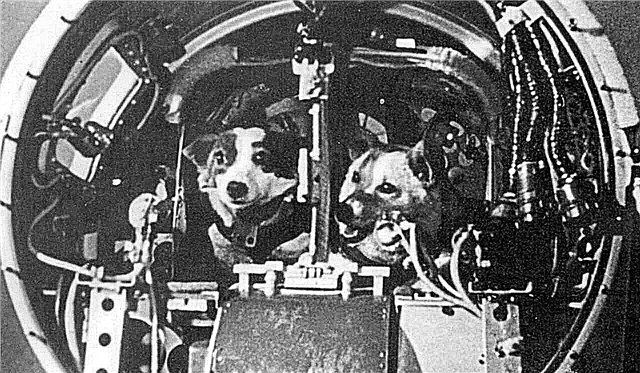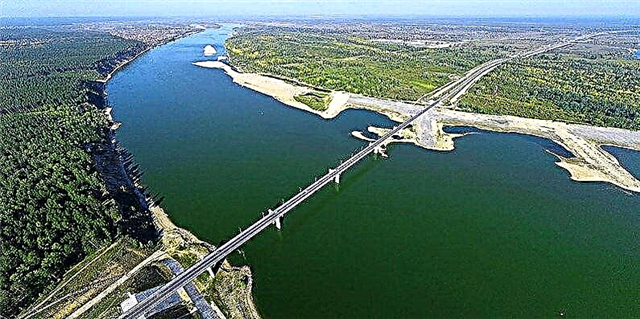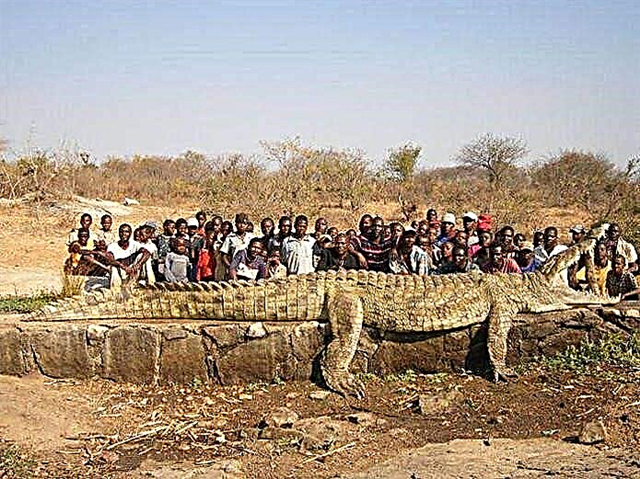
If you do not delve into the essence of the phenomenon, then we can say that the eclipse is a temporary disappearance from the horizon of the Sun or the Moon. How does this happen?
Solar eclipse
For example, the Moon, passing between the Earth and the Sun, completely or partially blocks the Sun from the Earth observer. This is a solar eclipse. Or the Moon, making its way around the Earth, falls into such a position that the Earth appears on a straight line connecting the Moon and the Sun.
Moon eclipse
The shadow of the Earth falls on the moon, and it disappears from the horizon. This is a lunar eclipse. Eclipses happen because celestial bodies constantly change location. The Earth revolves around the Sun, and the Moon around the Earth. Both of these processes occur simultaneously. If for a few minutes the moon, the earth and the sun are on the same line, an eclipse begins. A total solar eclipse is a very rare and dramatic event.
During a total solar eclipse, it seems that some huge monster devours the Sun piece by piece. When the sun disappears, the sky darkens and stars are visible in the sky. The air is rapidly cooling. Soon there is nothing left of the sun but a thin luminous ring, as if hanging in the sky, this we see part of the glowing solar corona.
Interesting fact: during a total solar eclipse, the air temperature decreases, the sky darkens and stars appear on it.
What happens during a solar eclipse

Ancient Chinese artists depicted a solar eclipse in the form of a dragon devouring the Sun. In fact, after a few minutes the Sun comes out of the “shelter”, and the night turns back into a clear day. This dragon is the moon that passed between the earth and the sun. To finally understand what happens during an eclipse, do a simple experiment. Turn on the desk lamp and look at it.
Now take a piece of cardboard and slowly drive it in front of your eyes so that at the end of the movement the cardboard is between your eyes and the lamp. The moment when the cardboard closes the lamp from your eyes, and corresponds to the moment the solar eclipse begins. The cardboard is far from the lamp, but when it appears in front of your eyes, it closes the light of the lamp from you. If you move the cardboard further, the lamp will again open to your eyes.
Total and partial solar eclipse
The same can be said of the moon. You see a solar eclipse when the Moon, crossing the daytime sky, is between the Sun and the illuminated face of the Earth, closing the light of the Sun from it. If the moon blocks only part of the sun, then a partial - solar eclipse occurs.
Part of the solar surface is obscured by the moon and dusk sets in for several minutes. But if the Moon passes exactly between the Earth and the Sun, then a total solar eclipse occurs. The moon completely obscures the disk of the sun. Total eclipses are very rare. Typically, the orbit of the moon passes either above or below the sun.

Because of these fluctuations, the Moon appears on an imaginary line connecting the Earth and the Sun only once every one or two years. To observe a total solar eclipse, you must be at the right time in the right place. If you sit in one place and not show activity, then, perhaps, you can observe one incomplete eclipse of the Sun once every two years. You can wait for a total eclipse for hundreds of years.
The lucky ones in Nova Scotia observed a total eclipse of the Sun in 1970, and then in 1972. But, for example, in London, the last solar eclipse was in 1715, and the next will take place only after 2700. So the people of London will have to wait a bit. But if you specifically hunt for eclipses, then total eclipses can be observed quite often
A total solar eclipse was in Finland on July 22, 1990. On the beaches of the Hawaiian Islands, a total eclipse was observed on July 11, 1991. On June 30, 1992, a total eclipse could be seen from ships crossing the South Atlantic. On November 3, 1994, a total solar eclipse is due to occur in Chile or Brazil.
A total solar eclipse, visible from the United States, occurred on February 26, 1979. The writer Annie Dillard described this event in the story "Total Eclipse." That was in the morning. Many people gathered on the hillsides in a suburb of Washington. “When the eclipse began,” writes Dillard, “the blue of the sky turned into indigo. The mountains on the horizon turned red, the grass on the hillsides turned silver. ” Finally, the black cover engulfed the Sun.There was a small white hoop hanging in the blackened sky. “Before the sun completely disappeared,” Dillard continues, “something unexpected happened. A wall of dark shadow ran across the Earth and people who observed the eclipse at great speed. Here a shadow flooded the valley, now it plunged into darkness. It was a monstrous, swift shadow of the moon.
Why are solar eclipses possible?
The diameter of the moon is only 1/400 of the diameter of the sun, but it is so closer to the earth than the sun that their diameters become approximately equal. This remarkable coincidence makes possible total solar eclipses when the contour of the moon completely coincides with the contour of the sun.
When the Sun began to appear again in the sky, the wall flashed again, this time the wall of the shadow leaving. It swept along our hill and rushed east at an incomprehensible speed and in an instant disappeared beyond the horizon. She led us into confusion, simply destroyed and disappeared. " A wall of shadow flying at a speed of 1,600 kilometers per hour made many spectators cry out in horror.












